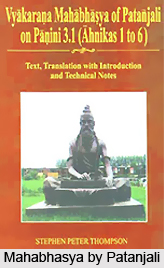 The history of ancient Indian theatre dates back to the Vedic age. Theatre in its rudiment form in ancient India was very popular with the Vedic people. It is believed that the theatrical culture in India originated in the times of Rig Veda. Themes regarding wild animals and hunters played the most pivotal role in the ancient Indian theatres. However, the ingredients for theatre were there already in India steeped in folklores, myths, tradition and legends written in umpteen languages as India is always the land of stories. However, the main idea and storyline of the ancient Indian theatres used to be the depiction of events of everyday life, dance and food. Ritualism made a great impact in the presentation of ancient Indian theatre and indeed paved the way of a rather classical presentation of Indian theatre.
The history of ancient Indian theatre dates back to the Vedic age. Theatre in its rudiment form in ancient India was very popular with the Vedic people. It is believed that the theatrical culture in India originated in the times of Rig Veda. Themes regarding wild animals and hunters played the most pivotal role in the ancient Indian theatres. However, the ingredients for theatre were there already in India steeped in folklores, myths, tradition and legends written in umpteen languages as India is always the land of stories. However, the main idea and storyline of the ancient Indian theatres used to be the depiction of events of everyday life, dance and food. Ritualism made a great impact in the presentation of ancient Indian theatre and indeed paved the way of a rather classical presentation of Indian theatre.
Theatre in ancient India of course played a major role in the over all enrichment of Indian tradition, culture, artistry and creativity. The origin of theatre in ancient India has been marked as the result of the religious ritualism of the "Vedic Aryans". The copious tradition of Indian drama unfolds the fact that theatre in ancient India in a rather systematic form was first introduced by "Bharata Muni". It is in his "Natya Shastra Bharata first prefaced the term "roopaka" which means portrayal of the reality in a very subtle way. According to the "Natya Shastra"- speech , poise, dance, mudra, rhythm and music offers an articulate dimension to action and emotion which are definitely the two important elements of Indian drama. This however clearly illustrates the richness of Indian theater that was even prevalent even in the long gone days of the ancient time.
 Sanskrit plays were the first recognized representation of the Indian theatre. Illustrations of daily events, rituals, tradition, dance and music laced the Sanskrit plays while making the plays the classical representation of applied art form in ancient India. Although in much a crude manner the Sanskrit theatre did originate in India somewhat about 3500 years ago, yet its artistic glory never faded away with time. It remained popular as an Indian art form till the last part of the 17th Century. It is right after the maturity of Indian classical dance form and with the development of Indian traditional Mudraas and ragas, Sanskrit plays, slowly evolved as one of the prominent art form of "Indian classical dance drama". "Ramayana" and the "Mahabharata" therefore can be considered as the first recognized classical plays that initiated in India. That was of course just the beginning of a rather contemporary approach in Indian classical drama which later influenced the whole of Asia with its creativity and innovativeness. Ramayana and Mahabharata, the two epics became the source of inspiration for the Indian dramatists like Bhasa in the 2nd century BC. Theater in ancient India was an aristocratic and religious form of expression which also received royal patronage. The great Indian emperor Harshavardhana wrote three plays Ratnavali, Priyadarsika and Nagananda
Eminent playwrights such as "Kalidasa", "Bhasa", "Shudraka", "Vishakhadutta" contributed a lot with their artistic splendor. Kalidasa brought about more plays in the history of ancient Indian theatres. These were: Malavikagnimitram, Vikramuurvashiiya and Abhijnanasakuntala
Sanskrit plays were the first recognized representation of the Indian theatre. Illustrations of daily events, rituals, tradition, dance and music laced the Sanskrit plays while making the plays the classical representation of applied art form in ancient India. Although in much a crude manner the Sanskrit theatre did originate in India somewhat about 3500 years ago, yet its artistic glory never faded away with time. It remained popular as an Indian art form till the last part of the 17th Century. It is right after the maturity of Indian classical dance form and with the development of Indian traditional Mudraas and ragas, Sanskrit plays, slowly evolved as one of the prominent art form of "Indian classical dance drama". "Ramayana" and the "Mahabharata" therefore can be considered as the first recognized classical plays that initiated in India. That was of course just the beginning of a rather contemporary approach in Indian classical drama which later influenced the whole of Asia with its creativity and innovativeness. Ramayana and Mahabharata, the two epics became the source of inspiration for the Indian dramatists like Bhasa in the 2nd century BC. Theater in ancient India was an aristocratic and religious form of expression which also received royal patronage. The great Indian emperor Harshavardhana wrote three plays Ratnavali, Priyadarsika and Nagananda
Eminent playwrights such as "Kalidasa", "Bhasa", "Shudraka", "Vishakhadutta" contributed a lot with their artistic splendor. Kalidasa brought about more plays in the history of ancient Indian theatres. These were: Malavikagnimitram, Vikramuurvashiiya and Abhijnanasakuntala
Theatre in ancient India started as a narrative form of expression and gradually incorporated dance, song and recitation as an integral part of the art form. This is perhaps the reason why ancient Indian theatre comprehended a varied art form amidst its presentation. Quite ideally therefore it won`t be an overstatement to say that mime, poetry, dance, music, painting, sculpture, literature as well as architecture all found a poetic diction into Indian natya even in the ancient days.




